Did you know that pea sprouts are packed with nutrients and can be grown year-round inside your home? Forget waiting months for homegrown peas – you can enjoy the delicious flavor of pea sprouts in just a few days! Not only are they quick and easy to grow, but they also require minimal equipment. In this article, I’ll guide you through the process of growing your own non-stop crop of nutrient-rich pea sprouts and shoots.
Key Takeaways:
- Pea sprouts are nutrient-rich and can be grown indoors all year round.
- They require minimal equipment and are quick and easy to grow.
- Pea sprouts can be harvested in just a few days, providing a fresh and delicious addition to your meals.
- Growing your own pea sprouts allows you to experiment with different varieties and enjoy the taste of homegrown greens.
- Pea shoots, a more mature version of pea sprouts, can also be grown in your garden with simple equipment and regular watering.
Pea Sprouts vs. Pea Shoots: What’s the Difference?
When it comes to pea sprouts and pea shoots, it’s easy to get confused. Both are delicious and nutritious additions to your meals, but they have distinct characteristics that set them apart.
Pea sprouts are the first stage in the lifecycle of a plant. They are grown in water and are consumed along with the seed and young root. With their tender and delicate texture, pea sprouts offer a delightful crunch and a mild and sweet pea flavor. They are packed with nutrients and are a great source of vitamins A, C, and K, as well as folate.
Pea shoots, on the other hand, are immature pea plants grown in soil. They are harvested after the true leaves have emerged and the plants are several inches tall. Pea shoots have a more herbaceous and leafy taste, with a slightly nutty undertone. They are incredibly versatile and can be used in salads, stir-fries, sandwiches, and more. Like pea sprouts, pea shoots are also highly nutritious, providing a rich source of vitamins and minerals.
Here’s a quick comparison between pea sprouts and pea shoots:
| Pea Sprouts | Pea Shoots |
|---|---|
| Grown in water | Grown in soil |
| Consumed with the seed and young root | Harvested after true leaves have emerged |
| Mild and sweet pea flavor | Herbaceous and leafy taste with a nutty undertone |
| Tender and delicate texture | More substantial, leafy texture |
Both pea sprouts and pea shoots are easy to grow at home, providing you with a fresh and sustainable source of greens all year round. So whether you prefer the crispness of pea sprouts or the leafy goodness of pea shoots, you can enjoy the vibrant flavors and nutritional benefits of these green wonders.
References:
- “Sprouts and Shoots: What Are They and Why You Should Be Eating Them.” Mayo Clinic.
- “The Difference Between Pea Shoots and Sprouts.” Growenjoy.co.uk.
Types of Peas for Sprouting
When it comes to growing nutrient-rich pea sprouts and shoots, there are several types of peas that are perfect for sprouting. Each variety offers its own unique flavor and characteristics, allowing you to experiment and find the ones that best suit your taste buds. Here are some popular varieties of peas for sprouting:
- Dwarf Gray Sugar pea: This variety is known for its sweet flavor and tender shoots, making it a delightful addition to salads and stir-fries.
- Green pea: With vibrant green leaves and a crisp texture, green pea shoots add a fresh taste to any dish.
- Speckled pea: These shoots feature speckled leaves and a slightly nutty flavor, making them a visually appealing and flavorful choice.
- Yellow pea: Yellow pea shoots offer a mild and slightly sweet taste, and their bright yellow color brings a pop of sunshine to your plate.
- Petite Snap-Green pea: These sprouts have a crunchy texture and a balanced flavor, perfect for adding a delicate crunch to your meals.
- Tendril pea: Known for their curly tendrils, tendril pea shoots have a delicate and mild flavor that pairs well with a variety of dishes.
Whether you prefer a sweet and tender variety or a slightly nutty and crunchy option, there is a pea variety to suit every palate. So go ahead, try different types of peas for sprouting and discover the flavors that will delight your taste buds!
Better Flavor, Greater Variety
One of the benefits of growing your own pea sprouts and shoots is the ability to choose from a wide range of pea varieties. This allows you to enjoy a greater variety of flavors and textures in your meals. Whether you enjoy the crispness of green pea shoots or the delicate tendrils of tendril pea sprouts, there is a pea variety to suit your culinary preferences.
Experiment with different types of peas for sprouting and elevate your dishes with their unique flavors and textures.
Equipment for Growing Pea Sprouts
To grow pea sprouts, you don’t need a lot of fancy equipment. Here are some options that will make the process easy and efficient:
- Jar with Sprouting Lid: A jar with a sprouting lid is a popular choice for growing pea sprouts. It allows for easy rinsing and draining of the seeds, ensuring optimal growth conditions. Simply add the seeds, rinse them, and let them germinate in the jar.
- Sprouting Jars: If you prefer a dedicated sprouting container, sprouting jars are a great option. These jars are specifically designed for sprouting and often come with built-in drainage systems.
- Sprouting Jar Lids: If you already have jars at home, you can simply purchase sprouting jar lids. These perforated lids allow for proper airflow while preventing the seeds from falling out.
- Cheesecloth: Another alternative is to use cheesecloth to cover your sprouting container. It lets air circulate while keeping the seeds in place.
- Seed Sprouters: Seed sprouters are specially designed containers with trays that allow for easy sprouting. They often come with a built-in drainage system, making them hassle-free to use.
All of these equipment options can be easily found at garden centers, health food stores, or online. Choose the one that suits your preference and start growing delicious pea sprouts indoors!
Growing Pea Sprouts: Step-by-Step Guide
Growing pea sprouts is a simple and rewarding process that can be done in just a few easy steps. By following this step-by-step guide, you’ll be able to grow your own delicious and nutritious pea sprouts right at home.
Step 1: Measure and Soak the Seeds
Start by measuring the desired amount of pea seeds for sprouting. Place the seeds in a jar or container and cover them with water. Allow the seeds to soak for 6-8 hours to ensure proper hydration and activation.
Step 2: Rinse and Drain
After the seeds have finished soaking, rinse them thoroughly under cool water. This helps to remove any impurities and promotes the growth of healthy sprouts. Drain the seeds and make sure to remove any excess water.
Step 3: Sprouting Jar or Tray
Transfer the rinsed and drained seeds to a sprouting jar or tray. Spread them evenly to ensure proper air circulation and prevent mold or mildew. If using a jar, make sure to cover it with a sprouting lid or mesh to allow for breathing and drainage.
Step 4: Rinse and Drain Regularly
To promote optimal growth, rinse the sprouts and drain them 2-3 times a day. This step helps to keep the sprouts hydrated and ensures they receive enough oxygen. After rinsing, make sure to remove any excess water to prevent stagnation.
Step 5: Harvest the Sprouts
Within 2-3 days, you will start to see the sprouts growing and reaching their desired length. When the sprouts have reached the desired size, they are ready to be harvested. Gently remove the sprouts from the jar or tray and rinse them one final time before consumption.
| Step | Action |
|---|---|
| Step 1 | Measure and soak the seeds for 6-8 hours |
| Step 2 | Rinse the seeds thoroughly and drain |
| Step 3 | Transfer the seeds to a sprouting jar or tray |
| Step 4 | Rinse and drain the sprouts 2-3 times a day |
| Step 5 | Harvest the sprouts when they reach the desired size |
How to Harvest and Store Pea Sprouts
Once the pea sprouts are ready to harvest, it’s important to handle them with care to ensure their freshness and quality. Here’s a step-by-step guide on how to properly harvest and store your pea sprouts:
Harvesting Pea Sprouts:
- Rinse the pea sprouts gently under running water to remove any dirt or debris.
- Lay the sprouts on a clean kitchen towel or paper towel to air-dry slightly. This will help remove excess moisture.
- Inspect the sprouts and remove any discolored or wilted ones. Only select the healthy and vibrant sprouts for storage.
By following these steps, you ensure that you’re harvesting the best pea sprouts for consumption or storage.
Storing Pea Sprouts:
To store your harvested pea sprouts and extend their freshness, you should follow these simple guidelines:
- Line a food storage container with paper towels. The paper towels will absorb any excess moisture and help maintain the sprouts’ crispness.
- Gently transfer the harvested pea sprouts into the lined container, making sure they are evenly distributed.
- Place the container in the refrigerator, ideally in the crisper drawer or in a cool area, away from direct sunlight.
- Keep the sprouts refrigerated and use them within a week for optimal taste and texture.
Remember not to store the sprouts while they are soaking wet, as excess moisture can lead to spoilage and reduce their storage life.
Properly harvested and stored pea sprouts can add a burst of freshness and nutrition to your meals throughout the week. With these simple steps, you can maximize the shelf life of your pea sprouts and enjoy them at their best.
Growing Pea Shoots: A Delightful Addition to Your Garden
Pea shoots are a delightful addition to any garden. Not only do they add vibrant greenery and visual appeal, but they also offer a host of benefits. From their nutritional value to their versatility in the kitchen, growing pea shoots can enhance both your gardening experience and your meals.
The Benefits of Growing Pea Shoots
There are several enticing benefits to growing pea shoots:
- 🌱 Nutrient-rich: Pea shoots are packed with essential vitamins, minerals, and antioxidants. They are particularly high in vitamins C and A, making them a refreshing and healthy addition to any salad or stir-fry.
- 🌱 Quick and easy: Pea shoots are one of the fastest-growing greens, allowing you to enjoy fresh harvests in just a few weeks. Their rapid growth makes them an ideal choice for impatient gardeners or those seeking almost-instant gratification.
- 🌱 Sustainable option: Growing your own pea shoots helps reduce your carbon footprint by eliminating the need for transportation and packaging associated with store-bought greens. It’s an eco-friendly choice that contributes to a greener planet.
How to Grow Pea Shoots
Growing pea shoots is a straightforward process that requires minimal space and tools. Here’s a step-by-step guide to get you started:
- Choose a container: Select containers with drainage holes to prevent waterlogged roots. Options include pots, trays, or even repurposed yogurt containers.
- Prepare the growing medium: Use a high-quality soil-less potting mix or compost to provide the plants with the necessary nutrients. Ensure the medium is well-draining to prevent excessive moisture.
- Sow the seeds: Scatter the pea seeds densely across the surface of the growing medium. Gently press them into the soil, ensuring good seed-to-soil contact.
- Water and cover: Water the soil lightly until it is evenly moist. You can cover the container with clear domes or plastic wrap to create a mini-greenhouse effect and retain soil moisture during germination.
- Provide light: Place the container in a location with bright, indirect light. Pea shoots thrive in moderate temperatures, so aim for a spot where the temperature remains between 60°F to 70°F (15°C to 21°C).
- Water regularly: Keep the growing medium consistently moist, but not waterlogged. Avoid overwatering, as it can lead to root rot.
- Harvest: When the shoots reach several inches in height and develop several leaves, they are ready for harvest. Cut them just above the microgreen embryo visible on the stem, leaving the base intact for regrowth.
Remember to enjoy your freshly harvested pea shoots within a few days for the best flavor and nutritional value. With these simple steps, you’ll be able to grow your own vibrant pea shoots and elevate your culinary creations with their refreshing taste and health benefits.
| Benefits of Growing Pea Shoots | How to Grow Pea Shoots |
|---|---|
|
|
Pea shoots add a touch of freshness to any dish, from salads and sandwiches to soups and stir-fries. Enrich your garden and your meals by cultivating these tender, flavorful greens.
Tips for Growing and Harvesting Pea Shoots
Growing pea shoots is a rewarding and enjoyable experience that allows you to enjoy fresh and nutritious greens right at home. Here are some helpful tips to ensure a successful harvest:
- Sow the seeds densely: When planting your pea shoots, make sure to sow the seeds densely to maximize the yield. This will result in a lush and abundant crop of flavorful shoots.
- Use a thin layer of moistened potting mix: Cover the seeds with a thin layer of moistened potting mix. This will provide the necessary moisture and support for the seeds to germinate and grow.
- Place the trays in a sunny window or under grow lights: Pea shoots thrive in bright light, so it’s important to provide them with adequate sunlight. If you don’t have access to a sunny window, you can use grow lights to ensure they receive the necessary light for healthy growth.
- Water regularly: Pea shoots require consistent moisture to thrive. Water the trays regularly, keeping the soil evenly moist but not waterlogged. Avoid letting the soil dry out, as this can hinder the growth of the shoots.
Harvesting pea shoots is a simple process that allows you to enjoy their fresh and vibrant flavors. Follow these steps to ensure a successful harvest:
- Wait until the shoots are several inches tall: Pea shoots are ready for harvest when they reach a height of several inches and have developed a good set of leaves. This indicates that they have reached their peak flavor and nutritional value.
- Cut slightly above the microgreen embryo: To harvest the shoots, use a clean pair of scissors or gardening shears to cut them slightly above the microgreen embryo visible on the stem. This will allow the shoots to regrow for multiple harvests.
By following these tips, you’ll be able to grow and harvest pea shoots successfully, adding a delightful and nutritious touch to your culinary creations.
Conclusion
Growing pea sprouts and shoots is a rewarding and easy way to enjoy nutrient-rich greens right at home. With just a few simple steps, you can have a continuous supply of fresh and flavorful pea sprouts and shoots to enhance your favorite dishes. Whether you prefer the convenience of sprouting in jars or the versatility of growing shoots in trays, you’ll be able to experience the delicious flavor and nutritional benefits of peas in just a matter of days or weeks.
When growing pea sprouts, experiment with different pea varieties to find the ones that suit your taste preferences. You can enjoy the vibrant crunch of Dwarf Gray Sugar peas, the classic sweetness of Green peas, or the unique characteristics of Speckled or Yellow peas. Each variety offers its own exciting flavor profile to elevate your culinary creations.
Similarly, when growing pea shoots, make sure to provide them with optimal growing conditions. Choose containers with proper drainage, use high-quality soil or compost, and keep the growing medium consistently moist. With a sunny window or grow lights, you can nurture your pea shoots into lush and tender greens, ready for harvest when they reach the ideal height.
So why wait? Start growing your own pea sprouts and shoots today, and experience the joy of harvesting and savoring these nutritious green gems straight from your garden or kitchen. Besides adding delightful flavors and textures to your meals, growing pea sprouts and shoots allows you to unleash your creativity and take pride in nurturing your own homegrown ingredients. Enjoy the fresh taste of these vibrant greens and reap the benefits of nutrient-rich homegrown produce.

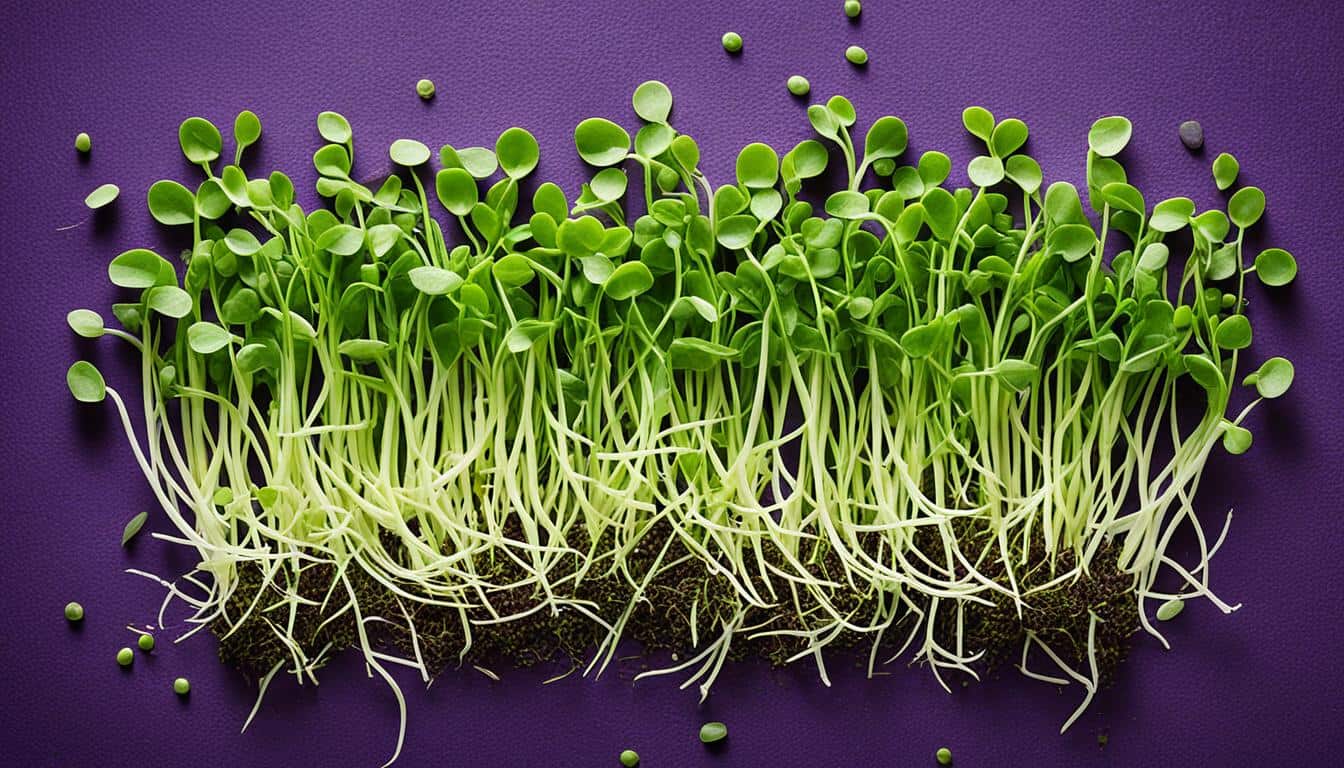

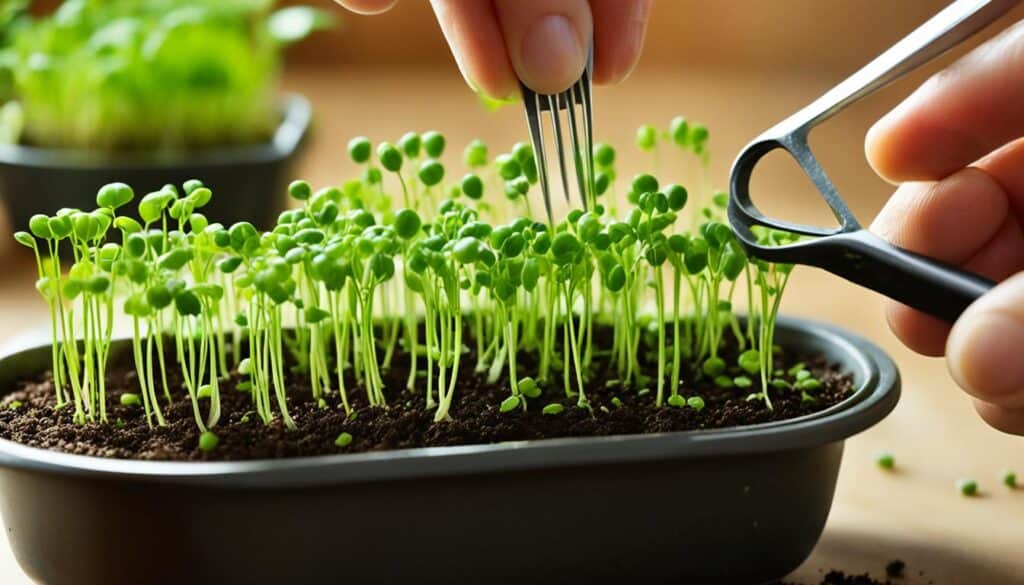
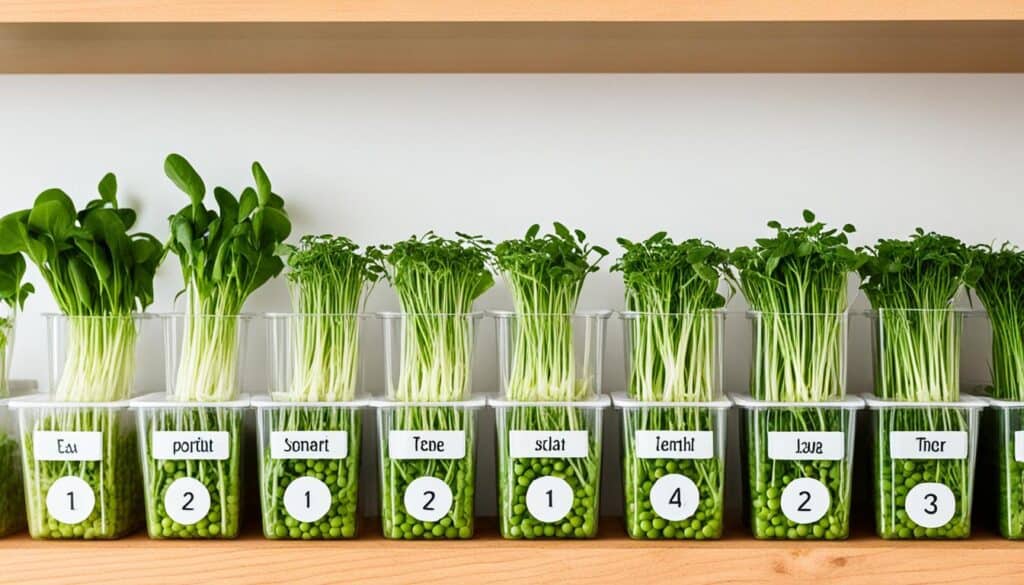
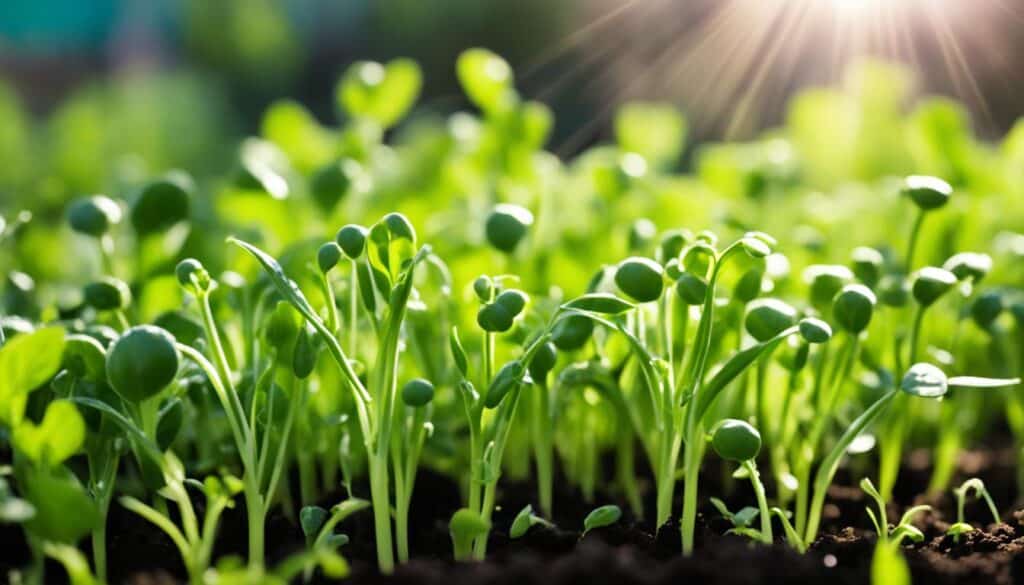
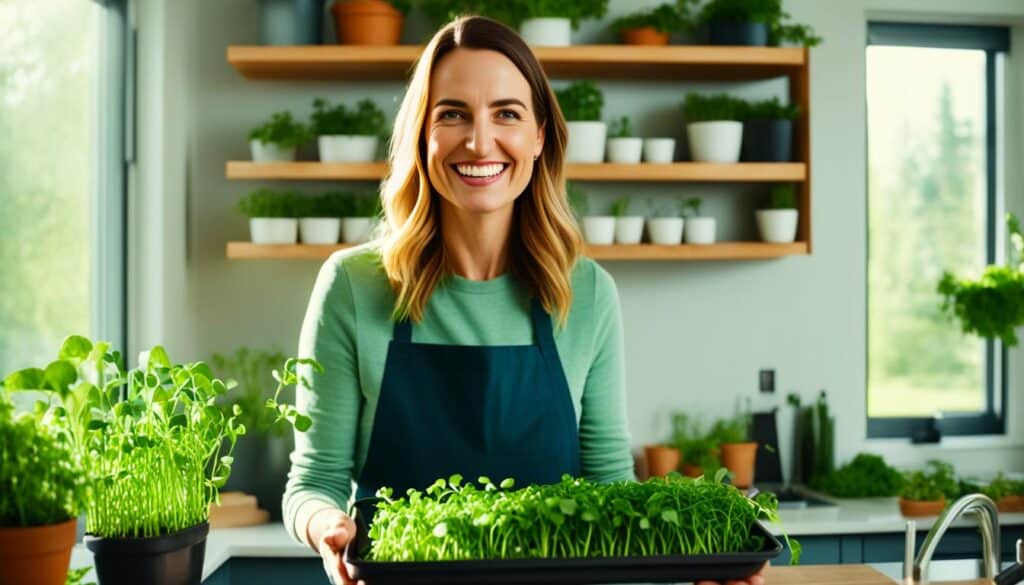



Leave a Reply